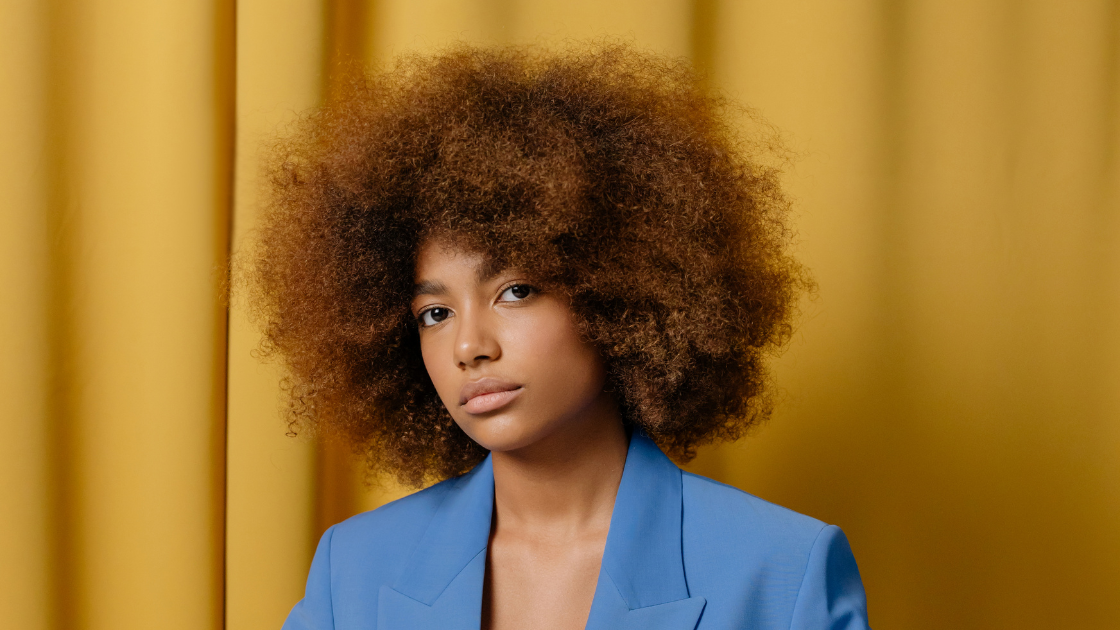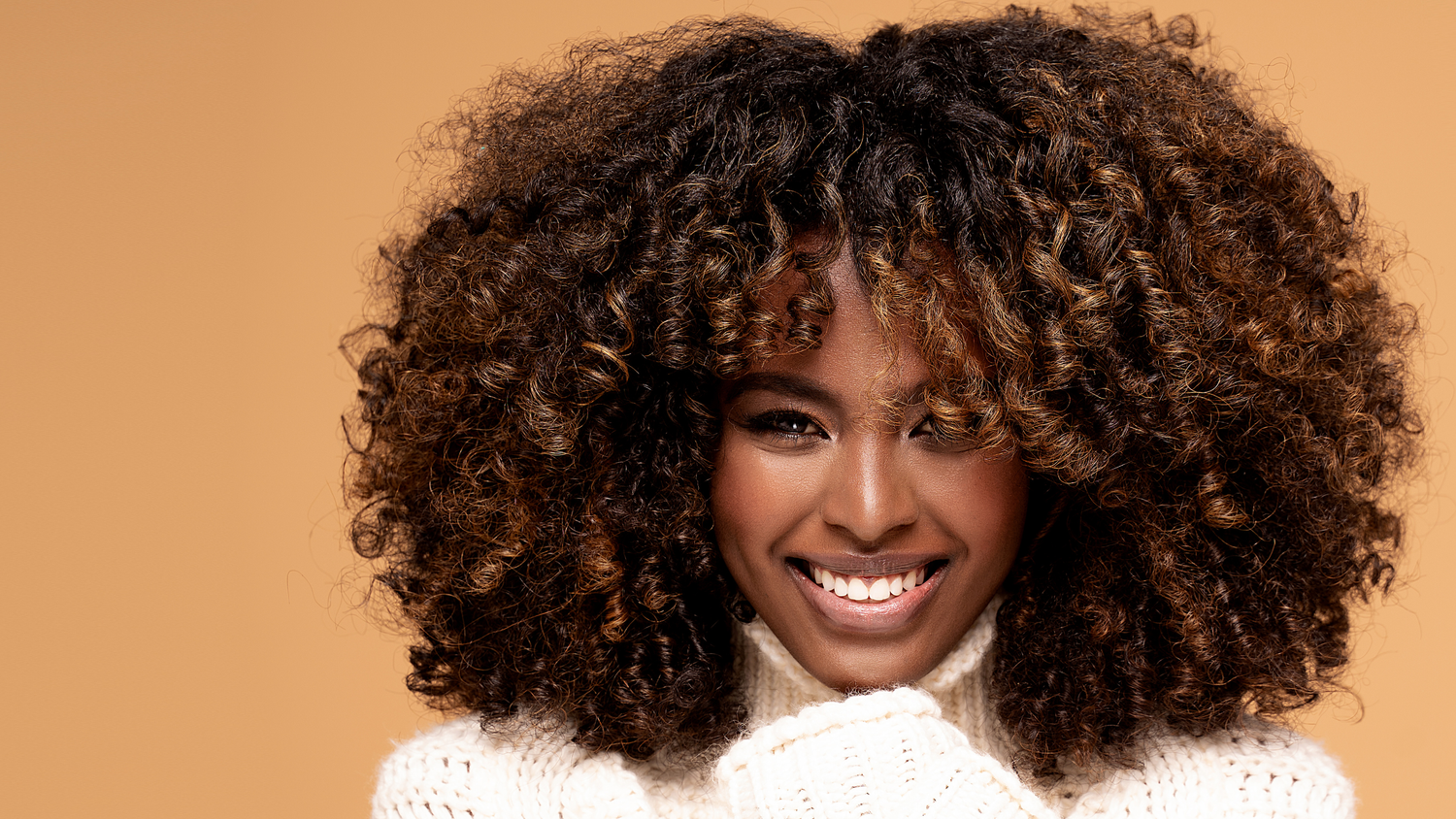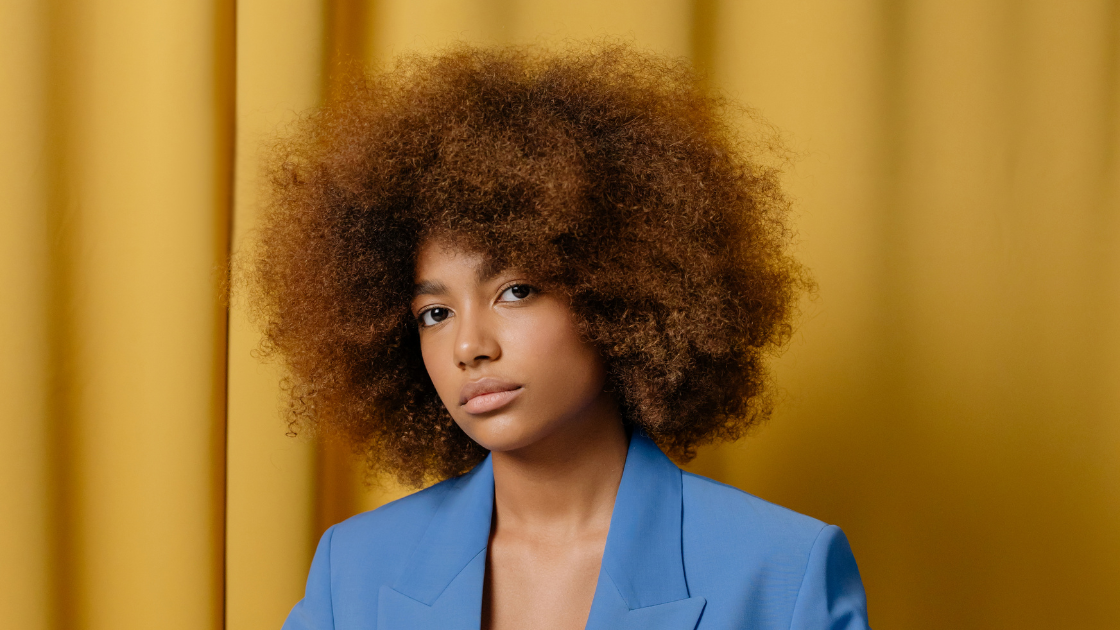Have you ever wondered, "Why isn't my Afro growing?" You're not alone. Many women with Type 4 (very tight curls/frizzy) Afro hair feel frustrated when it seems like their Afro just won't grow. The truth is, your hair is growing —typically about 1.25 cm per month on average (about half an inch), according to napturallycurly.com —but it often doesn't maintain its length due to breakage or other issues. This guide is designed to put your mind at ease and show you that with the right care, you can achieve longer, healthier Afro hair. We'll share Afro hair care tips and gentle solutions (with a little help from natural products from Zamata Cosmetics ) to address dryness, breakage, and other common challenges. By understanding what your hair needs and adjusting your routine accordingly, you'll be well on your way to stronger, longer Afro hair. Let's get started!
The truth about Afro hair growth – it actually grows!
Many people assume that their Afro hair simply doesn't grow. In reality, it grows continuously from the root - Afro hair grows at a similar rate to other hair types ( around 1.25 cm per month on average ). The key difference: Kinky/coily type 4 hair is prone to severe shrinkage and is very fragile. This means that the length is often not visible when the hair breaks off just as quickly as it grows back. The truth is: " Your hair is already growing. The real question is - are you keeping what grows back? " This retention of length is called length retention, i.e. the art of maintaining the length of hair once it has grown.

Shrinkage vs. Growth: Don't be fooled by shrinkage—Type 4 curls can shrink to 20–30% of their actual length. This means your new growth may not be visible unless you stretch or straighten your hair. Shrinkage is completely normal and a sign of healthy hair elasticity. However, it can hide your progress, as your un-stretched afro will always look shorter than it actually is.
Why length retention is challenging: Afro hair often struggles with dryness and breakage, making it difficult to maintain length. While your hair grows from your scalp, keeping that length alive depends on how you treat the ends of your hair—the oldest and most fragile part. If your ends break off as quickly as new hair grows in, you won't see any growth. So, the goal is to strengthen and protect your hair so you retain more of what you grow. In the next section, we'll look at the most common causes that hinder your hair growth (or length retention)—and how to fix them.
Top reasons why your Afro hair isn't growing (or staying long).

It's almost never because your hair isn't growing at all—rather, certain habits or external circumstances are causing your hair to break or lack moisture. This creates the impression that growth is stagnating. Let's look at the most common culprits for the frustrating feeling of "my hair isn't growing" :
Dryness:
Afro-textured hair is naturally prone to dryness . Because of its tightly coiled structure, the scalp's natural oils have a hard time migrating to the ends. This means that the ends of Afro hair don't receive much natural oil and often remain dry and brittle. Dry hair has less elasticity and is prone to breakage. As the saying goes, "Hair that retains moisture has more elasticity, breaks less often, and retains more length. Dry hair is more brittle, breaks easily, and prevents you from retaining length. " In other words, if your hair is constantly dry, it's likely to break before it can truly grow longer.
Solution: Focus on moisture at every step of your Afro hair care routine. Use moisturizing shampoos and conditioners, deep condition regularly, and seal in moisture with natural oils. For example, a rich leave-in conditioner or oil helps lock in moisture—seal in the moisture after washing so it doesn't evaporate immediately. A tip: After washing, apply a natural oil blend to the lengths and ends (e.g., Zamata Hair Oil ) to lock in moisture. This will keep your hair hydrated and bouncy for longer. ( We'll discuss specific care steps in more detail shortly.)

Hair breakage:
Hair breakage is often a result of dryness, but it's also a problem in itself. Daily manipulation of hair— combing, brushing, tight braids, or even rough pillowcases —can cause strands to break off. If you find small pieces of hair in the sink or on the floor, that's a sign of hair breakage. If as much hair breaks off as grows back, the length stays the same. " The average person grows half an inch of hair per month— so if you're losing this amount or more to breakage every month, it will appear as if your hair isn't growing."
Solution: Prevent breakage by keeping your hair hydrated (for more elasticity) and treating it gently. Avoid aggressive techniques and opt for low-manipulation styling. Use gentle tools: It's best to detangle your hair with your fingers or a wide-tooth comb instead of a fine brush. Avoid tight braids or hair ties. And most importantly : Protect your hair at night . Sleep on a satin pillowcase or wear a satin bonnet to reduce friction—because "sleeping without protection... can cause friction, dryness, and unnecessary hair loss " (blackcurlmagic.com). Less friction means less breakage. All of these measures will help you keep the hair that grows back.

Product deposits ( build-up ):
Using a lot of heavy products, oils, or butters without cleansing your hair regularly can lead to a buildup of residue on your scalp and hair. This buildup forms a film around your hair, blocking moisture from penetrating the strands . Additionally, clogged, sticky roots can disrupt the healthy scalp environment necessary for proper growth. Signs of buildup include a dull, coated feel to your hair, whitish buildup that isn't dandruff, or a scalp that feels waxy and messy even after washing.
Solution: Cleanse your scalp and hair regularly with a mild shampoo to remove product buildup. Avoid layering too many different products on top of each other. If you tend to use heavy styling products or oils, use a clarifying shampoo (deep cleansing) every now and then for a thorough cleanse. Clean roots and open cuticles allow moisture to flow back in and the hair follicles to breathe. Experts recommend, for example, " washing Afro hair every 7-10 days and avoiding product buildup ." One tip: Use a gentle, moisturizing shampoo like Zamata's Intense Hydration Shampoo for weekly maintenance and follow it up with a deep cleanse monthly to really get rid of all the residue.

Insufficient moisture ( hydration ):
While that sounds like "dryness," it means something else. The issue here is that you're not hydrating enough. Maybe you're not drinking enough water, skipping conditioner and deep conditioner, or you never moisturize your hair between washes. However, Afro hair needs regular moisture because it dries out more quickly. Without regular " topping up ," hair will become weak and brittle over time. Remember: water is the most fundamental moisturizer. " Water is the ultimate moisturizer for Afro hair ." If you don't consciously and systematically wet and condition your hair, it will remain in a constantly dry, fragile state. Your body needs water from within, too: One expert points out that when you're dehydrated, your body nourishes vital organs first and hair last—in other words, your hair will suffer if you don't drink enough.
Solution: Incorporate water and moisture generously into your routine. This might mean dampening your hair daily or every few days with water or a leave-in spray, and never skipping conditioner on wash days. Use a water spray or a sprayable leave-in conditioner (like Zamata's All-in-One Leave-In ) to moisturize your hair in between washes. And of course, drink plenty of water to keep your body, and therefore your hair, hydrated from within. (We can't say it enough—staying hydrated is part of hair care!) Every time you dampen your hair, follow up with something rich to seal in the moisture—be it a cream, oil, or butter. This will help hair stay soft and manageable for longer, rather than drying out again.

Excessive manipulation:
If you love trying new hairstyles every day, be careful—too much styling and manipulation can stunt hair growth. Constant brushing, combing, or daily fluffing of your Afro, very tight puffs, frequent blow-drying, or straightening —all of these can stress your hair and lead to breakage. Our kinky/coarse hair is delicate; any twisting or tugging can weaken it. Over-manipulation also means constantly changing styles and not giving your hair a break.
Solution: Opt for low-manipulation or protective styles, where your hair is left largely undisturbed for several days or weeks. Twists, braids, Bantu knots, or simply tucking the ends away are all styles that protect your hair. " Protective styling won't make your hair grow faster, but it will help you retain more length because you're not constantly manipulating your hair. " The key is to style safely: don't style too tightly (to avoid traction alopecia, or hair loss due to pulling) at the roots, and be careful when undoing. Alternate styles that put a lot of tension with looser ones to allow your roots and edges to recover. Give your hairline some time to relax to prevent breakage at the edges.

Now that we've identified the main problems, let's focus on solutions. The foundation for healthier, longer Afro hair is a consistent care routine that specifically addresses these issues. An important component of this is understanding the role of water in Afro hair care—we'll cover this next.
Water and Afro hair – a blessing and a curse
Water plays a complicated role in Afro hair care—it's both your best friend and a challenge that must be handled correctly. Let's take a look at the pros and cons of water for natural Afro hair:
The good (moisture is everything) :
-
Water is literally life for your hair. As mentioned, water is the ultimate moisturizer for Afro hair. It hydrates and plumps up strands, making them softer and more elastic (meaning less prone to breakage). Adding water to your hair can be as simple as misting your curls with a spray bottle in the morning, using water-based creams, and, of course, washing and conditioning regularly so your hair can properly absorb moisture. Afro hair thrives when it's well-hydrated—curls stand out better, styles last longer, and you'll notice noticeably more softness. Even the act of washing itself (with the right technique) promotes healthy growth: massaging your head with water and shampoo stimulates blood flow to the scalp (which delivers nutrients to the hair roots) and creates a clean environment for new growth . In European winters, where cold air outside and heated air inside can dry out hair, this moisture boost from washing is even more important.

The (potentially) bad:
-
Too much of a good thing can also be problematic when it comes to water. Excessive moisture without balance can lead to what is known as hygral fatigue - this happens when the hair cuticle is damaged by constant swelling and drying. In other words, if your hair is constantly saturated with water (e.g. , if you co-wash it every day without it ever drying properly, or if you never use protein treatments to strengthen it ), it can become mushy and prone to breakage over time. Another important factor is water quality . In many regions of Europe, the tap water is hard , i.e. water with a high mineral content. Hard water contains minerals such as calcium and magnesium that can build up on the hair and make it dry and dull. Over time, " the minerals dissolved in hard water form a film on the hair. This prevents moisture from penetrating the hair, leading to dryness." Even worse: " Hard water leads to hair breakage and split ends, which can prevent our hair from growing long and strong ." So if you wash your hair regularly but your hair still remains dry or brittle, limescale or mineral deposits from hard water could be the secret culprit.
How to get the most out of water (tips):
-
Don't be afraid of water — Afro hair needs moisture! It's just a matter of using water strategically so your hair gets the most out of it without suffering damage:
-
Always seal: After wetting or shampooing your hair, always apply a conditioner, cream, or oil to the lengths to lock in the absorbed moisture. Don't let the water simply evaporate! Consider the LOC method (liquid-oil-cream, or a similar sequence) to seal in hydration. For example, after shampooing, you could apply a leave-in conditioner or Zamata's Ultra-Moisturizing Conditioner to the ends, followed by a few drops of hair oil to really lock in the moisture.
-
Mitigate hard water: If you live in a region with hard water , consider getting a filter for your shower. Alternatively, you can occasionally rinse with filtered or bottled water (e.g., distilled water). Chelation shampoos ( special shampoos that remove mineral deposits ) are also helpful – a monthly treatment can draw the limescale out of your hair, thus preventing dryness. Your Afro hair will thank you for being free of this burdensome mineral film.
-
Don't walk around wet all the time: Don't leave your hair wet for long periods of time without strengthening it in between. If you water or co-wash your hair daily, consider incorporating a protein conditioner in between to strengthen the hair structure. Or give your hair breaks in between so it can dry completely and wear it in stretched/protective styles so it's not permanently puffy.
-
Use water as a refresher: During the week (on those "in-between days"), a light spritz of water can work wonders. Lightly dampen your hair with a spray bottle or water-based mist, then work in a touch of leave-in conditioner. This way, you can revive dry curls without having to wash them right away. This mini-moisture treatment in between washes prevents excessive dryness between wash days.
-
Conclusion:
Water is essential for the health of Afro hair—it provides much-needed hydration. However, it's important to then lock in that moisture and protect your hair from water-related damage. By adopting the right care habits (plenty of moisture, gentle treatment, and protection from dryness), you'll be a step closer to your goal of longer, stronger Afro hair . Armed with this knowledge, you can confidently take the next step and grow your Afro hair—healthy and strong!
( So far, we've covered the basics. In the next blog post, you'll learn how to turn all these tips into a practical weekly routine to get maximum length and health out of your Afro hair .)
💌 Be part of our Zamata community!
Healthier Afro hair starts here – and together everything is easier.
Register now directly via our pop-up and receive exclusive tips, inspiration and offers on Afro hair care.
💡 Tip: If the login window hasn't appeared yet, just stay on the page for a moment – it will open automatically!
We look forward to seeing you! 💕



